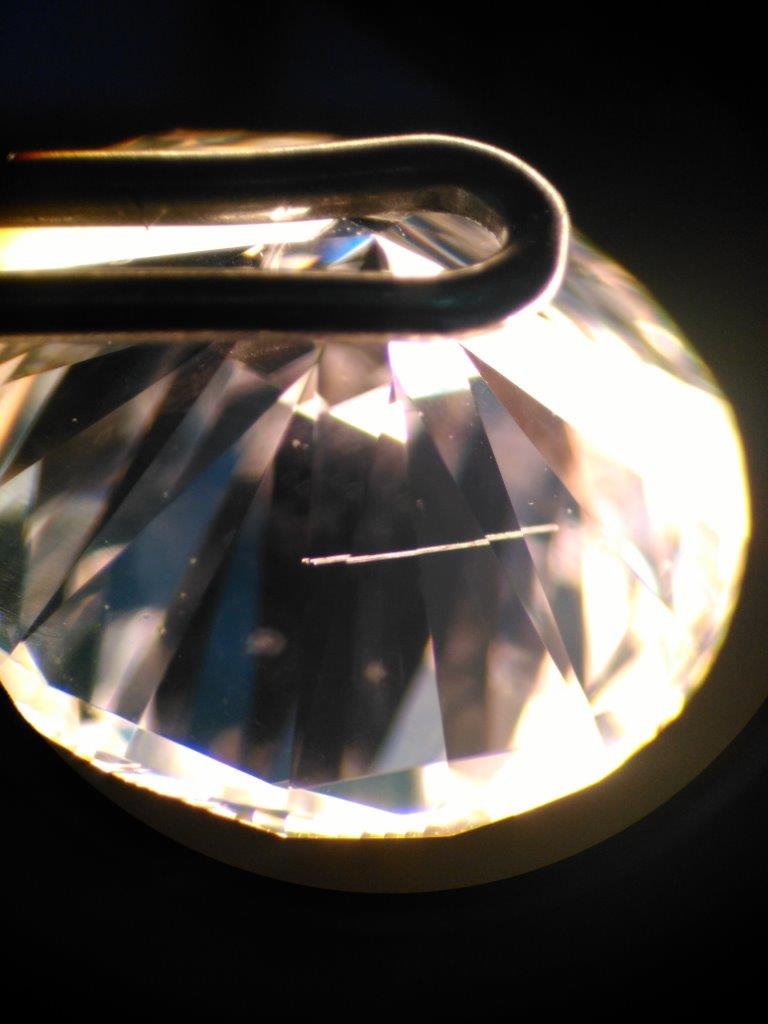How can you tell if a diamond is real?
How do you know if your diamonds are real or an imitation?
Buying a diamond involves a considerable financial expense, so we want to make sure that we get what we pay for. Like in any other deal, if the price seems too good to be true, you should question it. Verifying whether your diamond is real or fake involves a series of simple steps.
In all likelihood, you own diamond jewelry and not loose diamonds. The authenticity of diamonds set in jewelry is harder to verify because the stones are usually surrounded by white or yellow gold that hides parts of them. Still, the diamonds can undergo a few tests.
The "Fog Test"
Diamonds have unique properties, one of which is high thermal conductivity. Blow air on the diamond and watch what happens: if the condensation – "fog" – disappears from the surface of the stone immediately, it may be a real diamond. If the condensation remains in place for a few seconds, it is probably not a diamond.
The magnification test
When looking at a real diamond through a magnifying glass, microscope or jeweler's loupe, tiny black dots called inclusions will usually appear. Inclusions are natural specs of dirt that are characteristic of natural diamonds. Other materials, such as cubic zirconia or man-made diamonds, are mass-produced in factories and are usually free of inclusions, so under magnification the stone appears completely clear.
Natural diamonds also feature only one facet line. If when looking through one of the stone's bezel or star facets on the crown you see two facet lines, it is not a real diamond but rather moissanite, which is often used to produce imitation diamonds.
The sandpaper test
A diamond is the hardest material in nature. As such, no material can scratch it except for another diamond. Try rubbing the stone with sandpaper or another abrasive material. A natural diamond will emerge unscathed, but an imitation will feature scratches.
The light test
Diamond have unique optical properties and reflect light in a special way. Light penetrating the diamond reflects in shades of gray and white. When light breaking on the surface of the diamond reflects the colors of the rainbow. Imitation diamonds reflect the colors of the rainbow both inside and out.
Loose diamonds can also be subjected to several simple tests
The 'read-through' test
If the diamond is not set in jewelry, turn it over flat side up and placed it on printed-paper. If the text cannot be read through the stone, it may be a real diamond, as diamonds reflect light in a way that makes it impossible to see through them. Diamonds' have a very high refractive index, so if you can read text through the stone, it is probably not a real diamond, but cubic zirconia or another form of diamond imitation.

The water test
You can also try dropping the diamond into a glass of water. A real diamond will sink to the bottom of the glass, due to its high density, while an imitation diamond will float on the surface of the water, or only partially sink.
There are new instruments in the market for verifying diamonds' authenticity. One device is called GEMLOGIS Leo UV and it performs two tasks simultaneously: it checks the stone to determine whether it is a diamond or an imitation, and it tests it to determine whether it is a type IIa diamond, or a man-made diamond.
The best way to ensure your diamonds are real is to purchase them from an authorized source that provides a gemological certificate for each gem, indicating that it was inspected and certified by a gemological laboratory that uses advanced equipment and issues detailed specification of its findings.
Searching loose diamonds through the get-diamonds platform ensures that you acquire diamonds with original gemological certificates from world-renowned laboratories, which detail the diamonds' exact specifications. This is how you will know that you are buying the real thing.